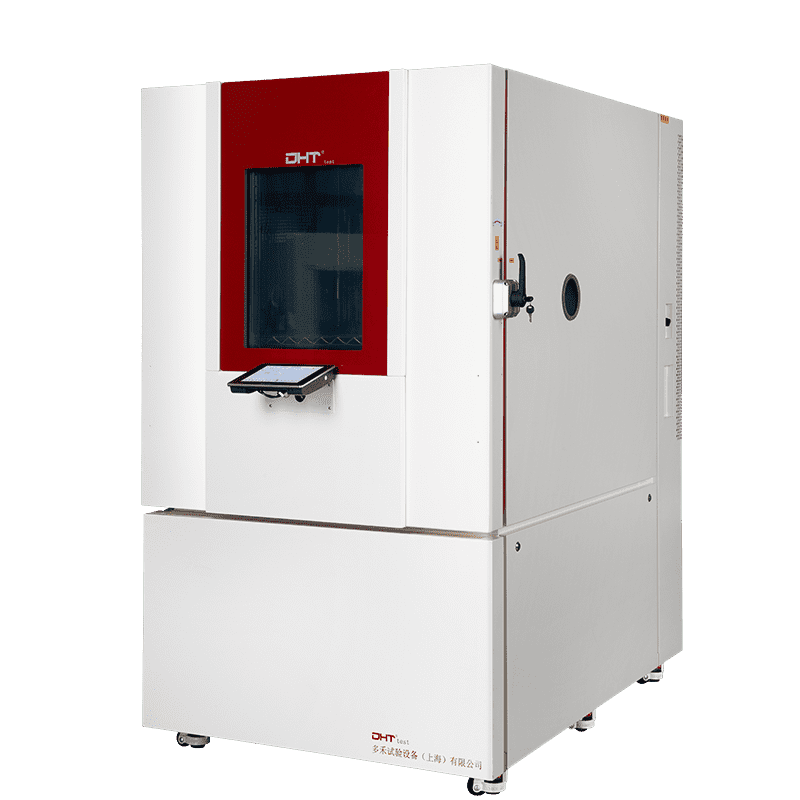Written by Robin
Senior Engineer, Doaho Test (DHT®)
Why Is Photostability Testing So Critical?
In the pharmaceutical industry, the stability of a drug is directly tied to its efficacy and safety. Beyond environmental factors such as temperature, humidity, and oxygen, light exposure is another critical variable that can impact product quality. Many active pharmaceutical ingredients (APIs) may degrade, discolor, or lose potency when exposed to natural light or specific wavelengths, thereby affecting both safety and therapeutic effectiveness.
To systematically and reliably evaluate how drugs behave under light exposure, the Photostability Chamber was developed. More than just laboratory equipment, it is an indispensable compliance tool for pharmaceutical companies in both R&D and quality management processes.
Definition and Core Functions of a Photostability Chamber
A Photostability Chamber is a specialized environmental test chamber designed specifically for light stability studies. It provides controlled ultraviolet (UV) and visible light exposure environments to simulate real-world storage and transportation conditions that drugs may encounter.
Its core functions include:
- Precise light control: Adjusts light intensity and spectral distribution according to international standards such as ICH Q1B guidelines.
- Stable environmental conditions: Since temperature and humidity can influence degradation during light testing, most photostability chambers are equipped with constant temperature and humidity functions.
- Long-term and accelerated testing: Capable of conducting both months-long stability studies and accelerated tests using high-intensity light sources.
In short, the Photostability Chamber is essential for conducting light stability research and generating the regulatory data required for drug approval.
Why the Pharmaceutical Industry Relies Heavily on Photostability Chambers
Regulatory Compliance
Global pharmacopoeias (ICH, USP, EP, etc.) explicitly require photostability data before drug registration and market authorization. The Photostability Chamber provides the controlled conditions necessary to generate this data, helping companies avoid regulatory setbacks due to missing or non-compliant results.
Drug Development
During new drug development, R&D teams must evaluate how candidate compounds respond to light. If a molecule is prone to photodegradation, formulators may need to optimize the formulation, add antioxidants, or use specialized packaging. The Photostability Chamber serves as a reliable platform to validate these improvements.
Packaging Validation
Drug packaging is not only a protective container but also a critical factor in maintaining stability. Photostability Chambers can assess how glass bottles, plastic containers, or aluminum foil pouches perform under light exposure, ensuring that packaging provides adequate protection.
Market and Patient Safety
Without photostability testing, drugs may undergo quality changes during storage or transportation—ranging from reduced efficacy to serious safety risks. Robust testing in a Photostability Chamber significantly lowers such risks and protects patients.
Technical Features of Photostability Chambers
Light Source Design
Light sources typically include fluorescent lamps (cool white and near-UV) or LED systems, designed to meet ICH Q1B requirements for spectral distribution and total light exposure. High-quality chambers ensure precise light intensity control and reproducible test outcomes.
Temperature and Humidity Control
Although light is the primary test variable, temperature and humidity also influence drug degradation rates. Advanced Photostability Chambers are therefore equipped with automatic temperature and humidity control systems to maintain stable conditions throughout testing.
Uniformity and Monitoring
Uniform light distribution is essential for scientific accuracy. Modern chambers employ reflective designs and real-time sensors to guarantee even exposure across all samples.
Safety and Smart Features
Some Photostability Chambers are equipped with automatic shut-off protection, real-time alarms, data logging, and remote monitoring capabilities—enabling pharmaceutical companies to meet data integrity requirements in line with regulatory expectations.
Photostability Chambers and the ICH Q1B Guideline
The International Council for Harmonisation (ICH) issued the Q1B guideline, the global standard for photostability testing. Key requirements include:
- Drug samples must be exposed to at least 1.2 million lux hours of visible light and 200 watt hours per square meter (W·h/m²) of near-UV energy.
- Testing should include comparisons across different packaging materials.
- Post-exposure analysis must evaluate product appearance, potency, and degradation products.
Photostability Chambers are specifically designed to help pharmaceutical companies meet these requirements efficiently and accurately.
How to Choose the Right Photostability Chamber
For pharmaceutical companies, selecting a Photostability Chamber should go beyond price or appearance. Key considerations include:
- Compliance with ICH Q1B Ensure the chamber’s light source and control systems meet pharmacopoeial requirements for intensity and spectrum.
- Light Uniformity and Reproducibility High-quality equipment guarantees consistent and repeatable test results.
- Temperature and Humidity Control A reliable chamber should maintain stable environmental conditions during testing.
- Data Recording and Compliance Support Features such as 21 CFR Part 11 compatibility, electronic audit trails, and traceability are critical for passing quality system audits.
- After-Sales Service and Validation Support Verify that the supplier provides IQ (Installation Qualification), OQ (Operational Qualification), and PQ (Performance Qualification) documentation—vital for regulatory compliance.
Conclusion
In the pharmaceutical industry, drug safety and efficacy are non-negotiable. As the core instrument for photostability testing, the Photostability Chamber not only ensures compliance with international guidelines such as ICH Q1B but also plays a vital role in R&D, packaging validation, and long-term quality assurance.
Choosing a high-performance, regulation-compliant Photostability Chamber is a strategic investment—boosting R&D efficiency, supporting regulatory compliance, and strengthening market competitiveness. For companies committed to long-term growth, this equipment represents far more than a testing device; it is a commitment to patient safety and corporate responsibility.


-1.png.webp)